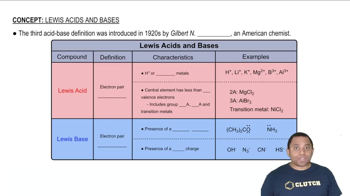The following pictures represent solutions at various stages in the titration of a weak base B with aqueous HCl. (Cl- ions and solvent water molecules have been omitted for clarity.)
. (b) Is the pH at the equivalence point more or less than 7?

 Verified step by step guidance
Verified step by step guidance



The following pictures represent solutions at various stages in the titration of a weak base B with aqueous HCl. (Cl- ions and solvent water molecules have been omitted for clarity.)
. (b) Is the pH at the equivalence point more or less than 7?
The following pictures represent solutions at various stages in the titration of sulfuric acid H2A (A2- = SO4 2-) with aqueous NaOH. (Na+ ions and water molecules have been omitted for clarity.)
. (a) To which of the following stages do solutions 1–4 correspond? (i) Halfway to the first equivalence point (ii) Halfway between the first and second equivalence points (iii) At the second equivalence point (iv) Beyond the second equivalence point
The following pictures represent solutions of Ag2CrO4, which also may contain ions other than Ag+ and CrO42- that are not shown. Solution 1 is in equilibrium with solid Ag2CrO4. Will a precipitate of solid Ag2CrO4 form in solutions 2-4? Explain.
(1) (2) (3) (4)